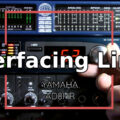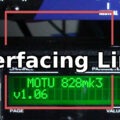If Behringer is the Walmart of budget interfaces, Focusrite is the Target. Retailing at £349 the Focusrite Saffire Pro 40 offered a low-cost alternative to the M-Audio 2626. Let’s find out if it can Linux in 2020.
Audio & Video Questions
If you have questions about setting up and configuring audio/video hardware or software, head over to the community forums on Interfacing Linux.
Tech specs:
MIC
• Frequency Response: 20Hz – 20kHz +/- 0.1 dB.
• THD+N: 0.001% (measured at 1kHz with a 20Hz/22kHz band pass filter).
• Noise: EIN > 125dB (128dB analogue to digital): measured at ~60dB of gain with 150 Ohm termination
(20Hz/22kHz band pass filter).
LINE
• Frequency Response: 20Hz – 20kHz +/- 0.1dB.
• THD+N: <0.001% (measured with 0dBFS equivalent input and 22Hz/22kHz band pass filter).
• Noise: -90dBu (22Hz/22kHz band pass filter).
INSTRUMENT
• Frequency Response: 20Hz – 20kHz +/- 0.1dB.
• THD+N: 0.004% (measured with 0dBu input and 20Hz/22kHz band pass filter).
• Noise: -87dBu (20Hz/22kHz band pass filter).
DIGITAL PERFORMANCE
• A/D Dynamic Range 110dB ‘A-weighted’ (all inputs).
• D/A Dynamic Range 110dB ‘A-weighted’ (all outputs).
• JetPLLTM PLL technology providing superb jitter reduction, for class leading converter performance.
• Clock Jitter < 250 pico seconds.
• Sample rates: 44.1 to 96kHz.
• 20 input channels to computer: Analogue (8), S/PDIF (2), ADAT (8) and Mix Loop-back (2).
• 20 output channels from computer: Analogue (10), S/PDIF (2) and ADAT (8).
• Fully assignable 18 input by 16 output mixer.
ANALOGUE INPUTS
• Mic / Line inputs on XLR Combo with auto-switching between XLR and TRS.
• Mic / Line / Instrument 1 & 2: 2 x XLR Combo on front panel.
• Mic / Line 3-8: 6 x XLR Combo.
• Instrument: As above, switched to Instrument (inputs 1 & 2 only).
• Mic Gain: +10dB to + 55dB.
• Line 1-8 Gain: -10dB to +36dB.
• Instrument Gain: +10dB to +55dB.
• Input Pad on inputs 1-2, -9dB.
• Phantom power switched in 4 channel groups on Mic. 1-4 and 5-8.
• Mic and instrument maximum input level +7dBu (+16dBu with pad on inputs 1 and 2).
• Line maximum input level +22dBu.
ANALOGUE OUTPUTS
• Line level 10 x 1/4 inch TRS Jack.
• Outputs Monitor 1 and 2 have anti-thump protection circuitry.
• Nominal output level 0dBFS = 16dBu, balanced.
• Frequency Response: 20Hz – 20kHz +/- 0.2dB.
• THD+N <0.0010% (-100dB) (measured with 0dBFS input 22Hz/22kHz band pass filter, un-weighted).
• Software switched attenuation (–20dB) on outputs 1 and 2 (for sensitive active monitors).
• Hardware and Software Controlled Digital Volume control for all outputs (assignable through control panel).
• Hardware and Software Controlled Digital Dim and Mute controls for all outputs (assignable through control panel).
• All outputs are useable as monitoring outputs
27
DIGITAL I/O
• S/PDIF input and output (RCA phono) on rear panel, (24-bit, 44.1 – 96kHz) Output transformer isolated.
• ADAT In / Out 8 channels (44.1 / 48kHz), 4 channels S-MUX (88.2 / 96kHz).
• ADAT Input / Output can be re-configured to be optical S/PDIF input / output via control panel.
Jackbox: Testing setup
| CPU | AMD Ryzen 7 1700 | ||
| RAM | Corsair LPX 16GB | ||
| Motherboard | MSI B350 Tomahawk | ||
| GPU | Nvidia Quadro 4000 | ||
| SSD | Samsung 840 | ||
| PSU: | EVGA 600 B1 | ||
| Firewire: | Syba SY-PEX30016 | ||
| Network: | Intel i350-T4 | ||
| OS: | Debian Buster | ||
| Kernel: | 5.4.47-rt | ||
| Desktop: | XFCE 4.12 | ||
Pulseaudio: Focusrite Saffire Pro 40 immediately recognized by ALSA and Pulseaudio.
ALSA: Settings exposed via alsamixer.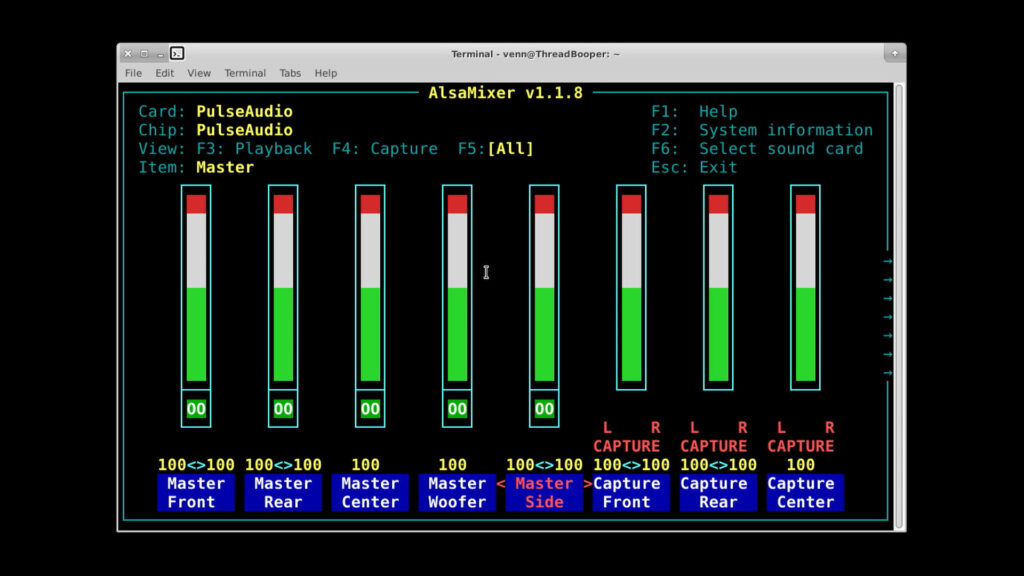
Jack: Connects using the drivers provided by FFADO.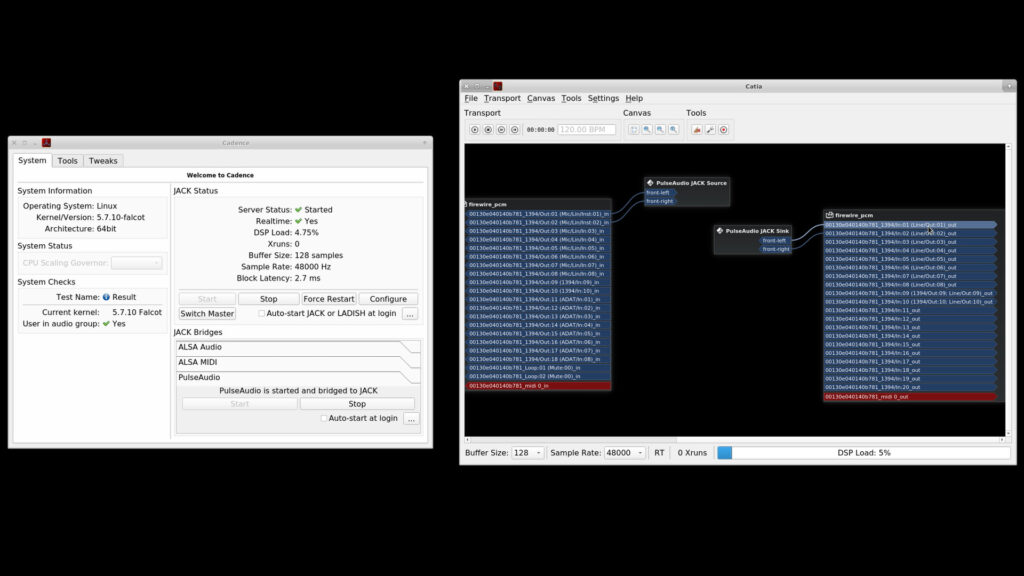
Disable ALSA firewire drivers: If you plan on using the Focusrite Saffire Pro 40 for recording you will need to disable the ALSA drivers.
Create the file alsa-nope.conf in /etc/modprobe.d/ and add the following. Reboot.
blacklist snd-dice
Focusrite Saffire Pro 40: Round-trip latency @44100 HZ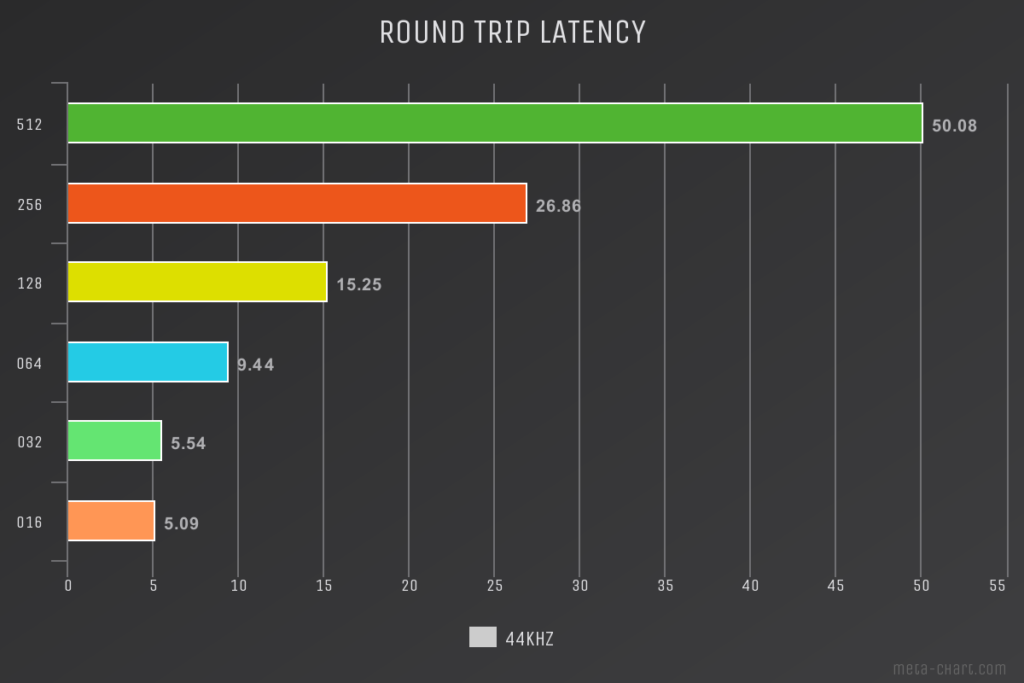
Focusrite Saffire Pro 40: Round-trip latency @48000 HZ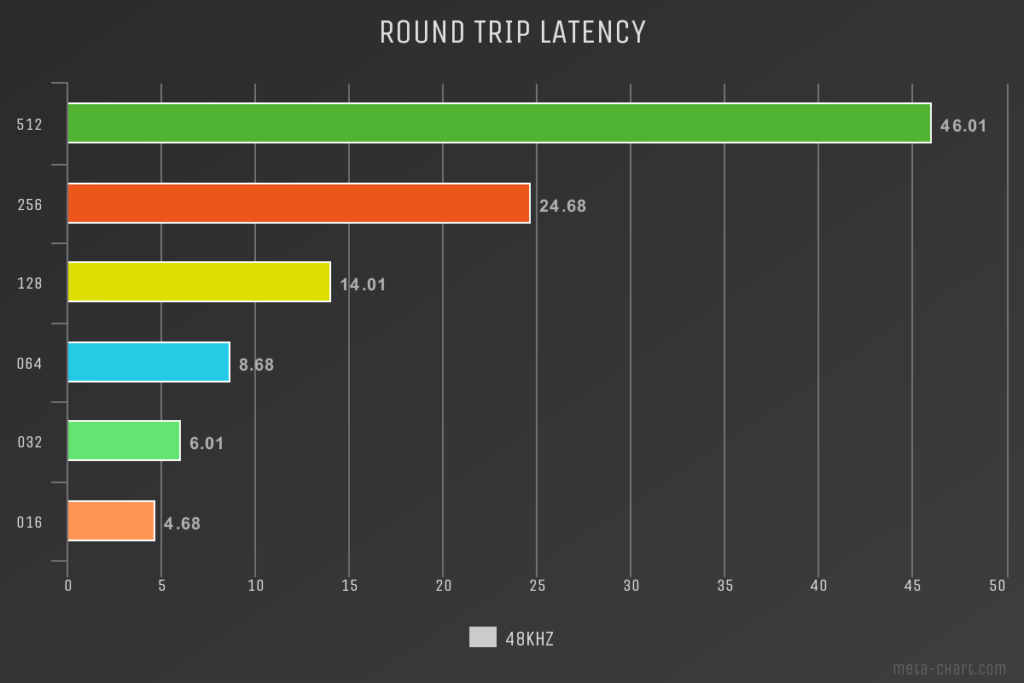
Verdict:
The inability to reliably save internal DSP settings makes the Focusrite Saffire Pro 40 a nonstarter. Things get even worse when you realize there is no way to hardware reset the device from Linux. That became an issue since I managed to render the device inoperable after 30 or so minutes of experimenting.
As I said in the video, if you have one it can be made to work under Linux but I wouldn’t recommend it. For the same amount of cash you can pick up the M-Audio 2626, the interface Focusrite was trying to compete against in 2009.
UPDATE:
One of the reasons I initially gave the Focusrite Saffire Pro 40 such a low score was the need to launch ffado-mixer to load the DSP routing. I have since learned the last setting can be recalled by loading ffado-dbus-server before starting Jack. That will (most of the time) load your setting from ffado-mixer.
Check out our Amazon idea list, take a look at our studio gear, or donate your unloved audio equipment.
Focusrite Saffire Pro 40
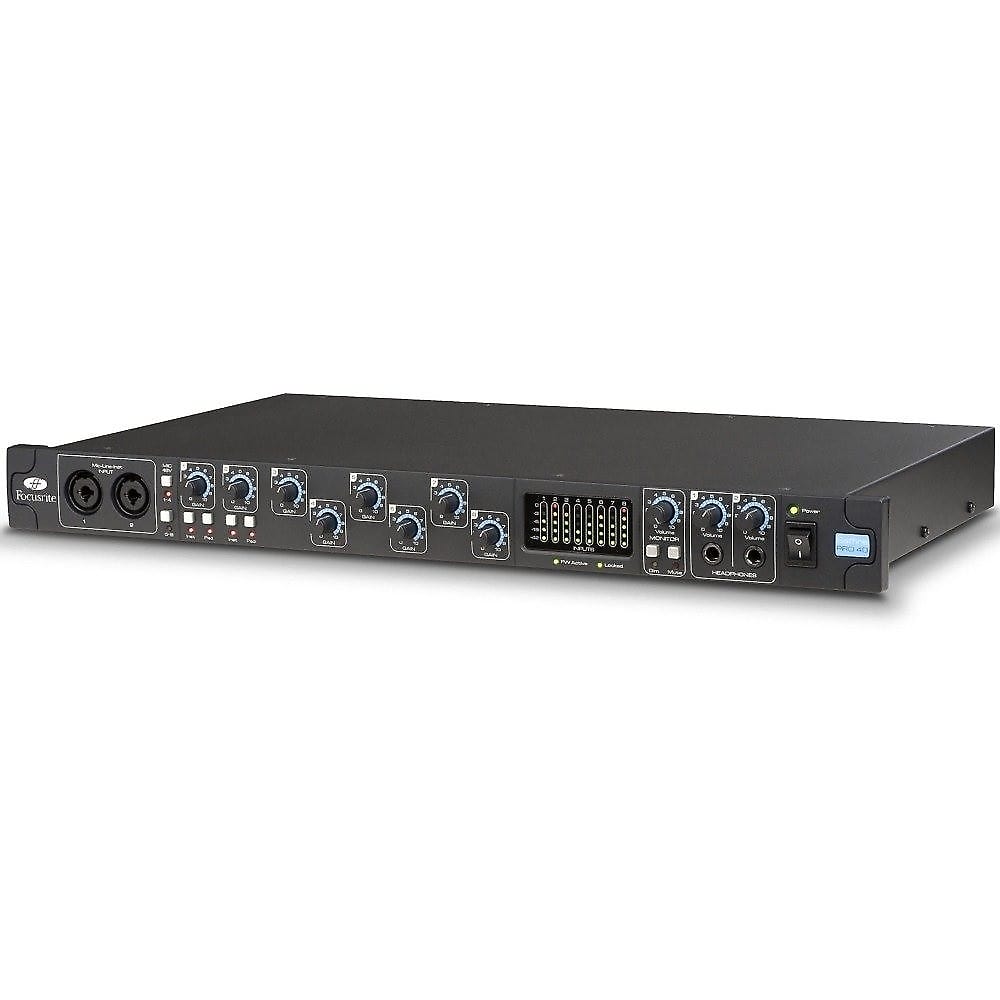
Pros
ADAT.
MIDI.
8 serviceable preamps.
It will probably outlive you.
Cons
No factory reset.
No preamp bypass.
96K is knackered.
Bad ALSA drivers



